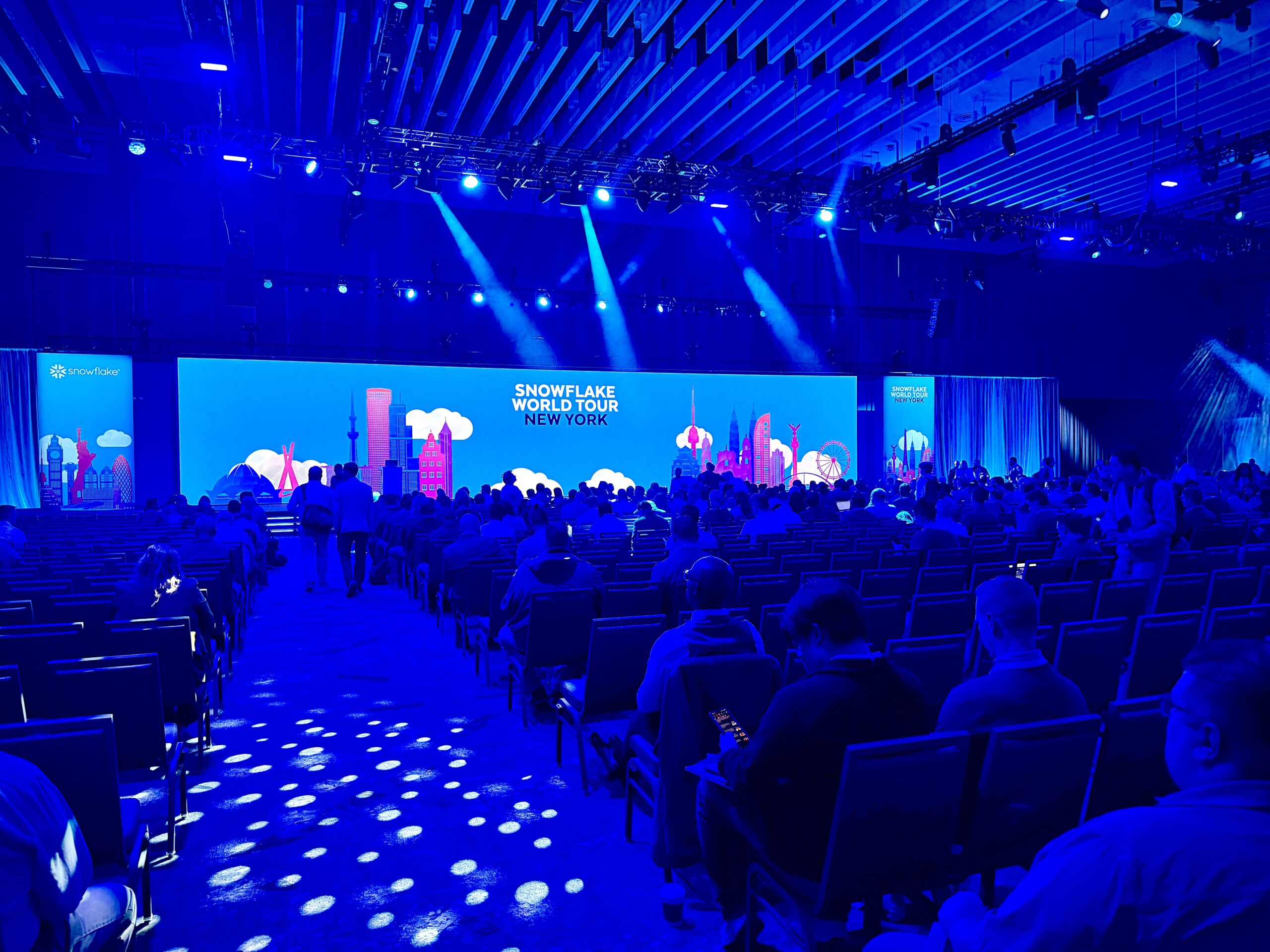How the latest updates from Snowflake signal a bigger shift in how customer experiences are built.
TL;DR: AI runs on data. Snowflake is where that data lives—and now, it’s what’s bringing AI into the tool’s marketers use every day. And the more technically fluent your marketing team is, the faster you move. And the faster you move, the more your business grows.
At the recent NYC stop of Snowflake’s World Tour, our team got a firsthand look at how the platform is evolving from back-end infrastructure into something marketers should deeply understand.
With updates like Cortex AI, semantic modeling, and natural language prompts now integrated into tools like Microsoft 365 and Teams, business users can interact with enterprise data in real time.
That means you can now ask questions like: “Which customers bought last quarter but didn’t open the last email?”
… and get an actual answer, without filing a single ticket or waiting on a report.
We see this as a clear signal that Snowflake is no longer just for engineers. It’s becoming the connective layer for AI-powered, real-time customer experiences.
Here’s Why Marketers Should Pay Attention
While most marketers won’t build inside Snowflake, what they deliver increasingly depends on it.
In fact, Snowflake can replace parts of your CDP—especially if your team is moving toward a composable, warehouse-native stack.
It’s also reshaping how your other tools (like personalization platforms, campaign builders, and analytics dashboards) function by influencing:
- How fast they operate
- How clean and connected their data is
- How AI-ready your strategy becomes
If your role touches any part of CX—lifecycle marketing, personalization, analytics, or performance—this shift is likely already influencing your work behind the scenes.
A Quick Primer: What Snowflake Is (And Isn’t)
At its core, Snowflake is a composable, cloud-native data platform. That means it gives teams the flexibility to build what they need—from data models to marketing activations—on a single, governed foundation.
But unlike a packaged CDP (like Salesforce Data 360 fka Data Cloud or Adobe RTCDP), it doesn’t come with marketer-facing interfaces out of the box. Here’s how they differ:
- Packaged CDPs are designed for end users. They include visual interfaces, drag-and-drop segmentation, and pre-built connectors.
- Composable CDPs, like what Snowflake enables, are more customizable—but require teams to architect the data, models, and activation flows themselves.
In plain terms, Snowflake is a giant, organized brain for your customer data. It centralizes behavioral, transactional, loyalty, and product data into a secure, governed, real-time foundation.
What Snowflake isn’t:
- A marketer-facing interface
- A campaign tool or execution platform
- Turnkey for marketers without data team involvement
What Snowflake enables:
- Real-time segmentation and personalization
- Unified identity resolution
- Smarter AI models that understand business context
- Faster activation across platforms
Think of Snowflake as the foundation beneath your stack: not another tool to manage, but the layer that makes your martech ecosystem more intelligent, efficient, and AI-ready.
What We Saw at The NYC World Tour
Three key updates from Snowflake stood out, each with real implications for marketers:
1. Prompt-Based AI Is Now Embedded in Microsoft 365
Snowflake is launching Snowflake Intelligence™, an agentic AI layer that enables business users to ask natural-language questions of enterprise data—directly inside Microsoft Teams and Copilot.
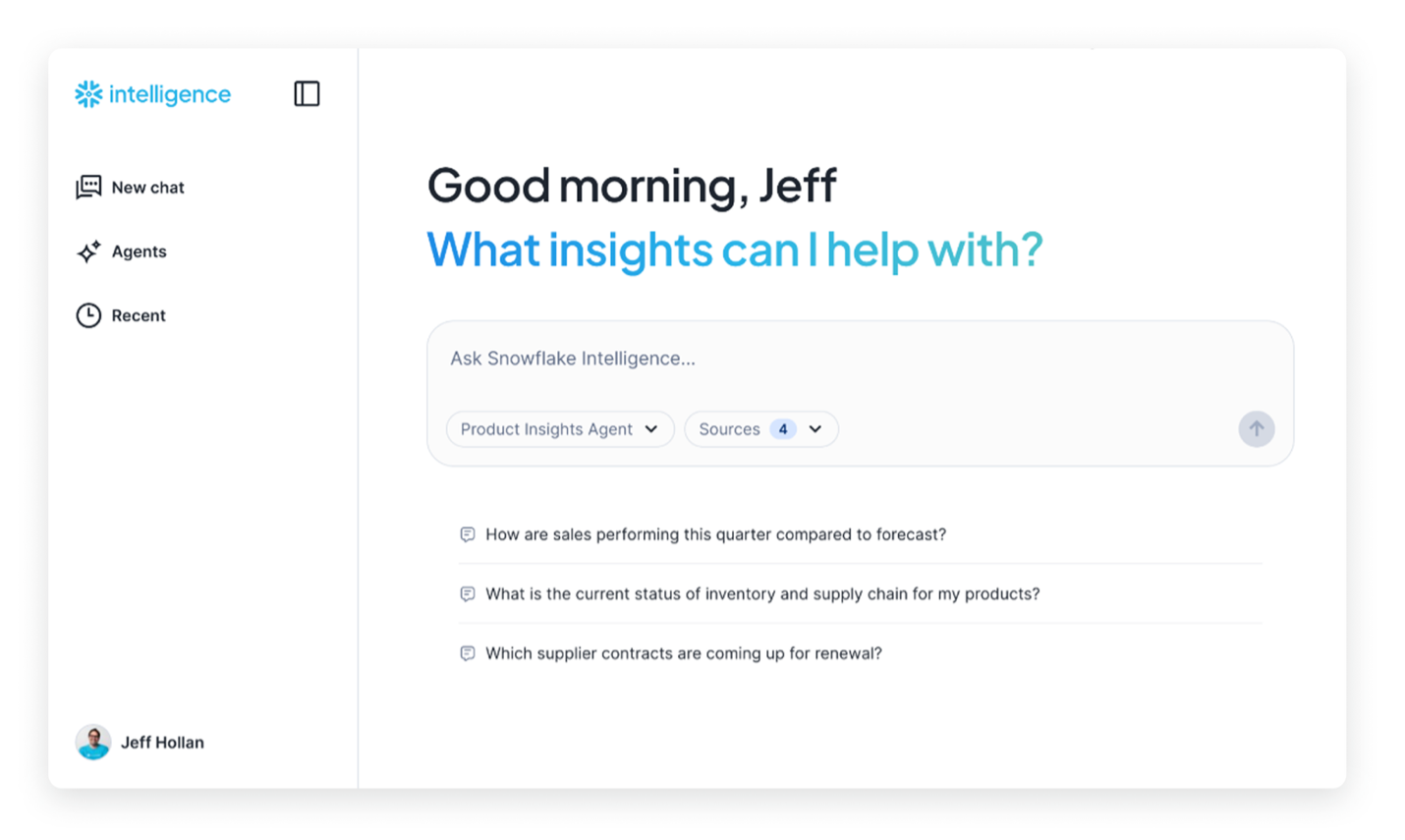
This is powered by:
- Cortex Agents (for prompts and actions)
- Cortex Analyst (to interpret questions)
- Cortex Search (for querying unstructured data)
These are the building blocks that enable interaction with both structured and unstructured data.
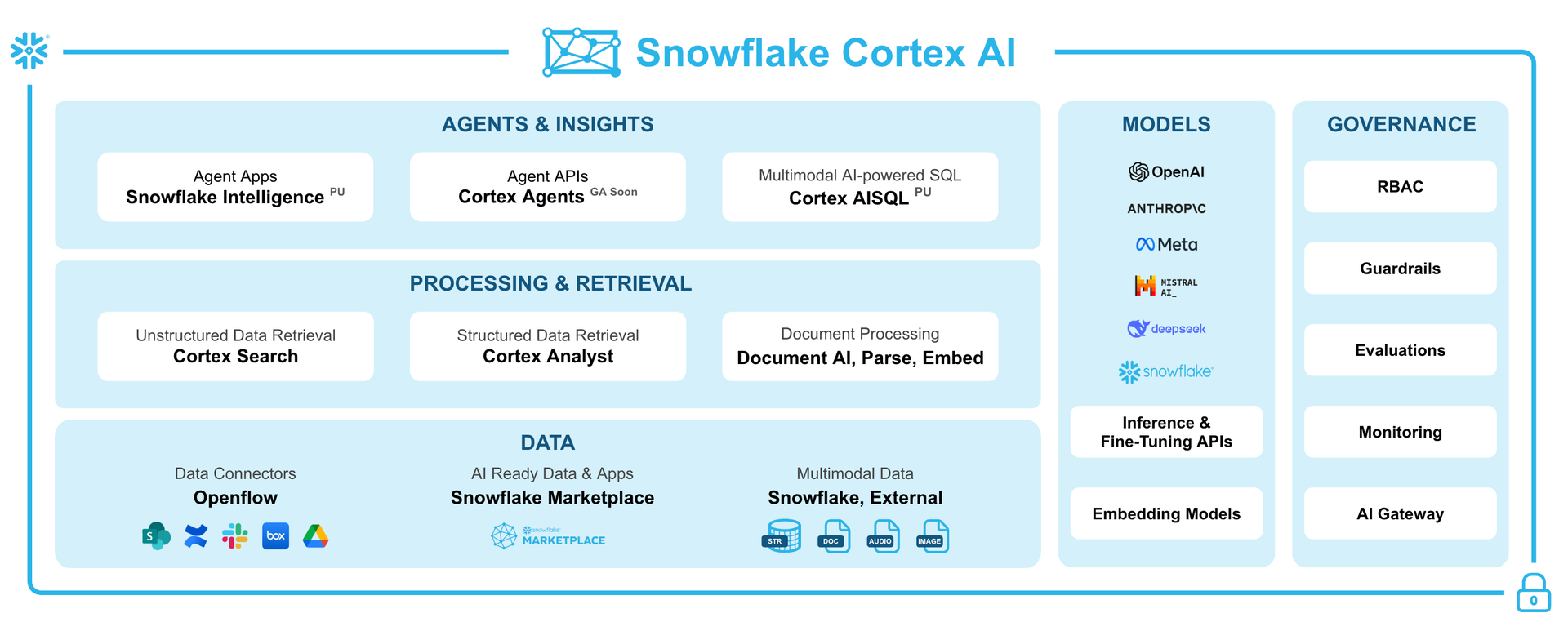
Why marketers should care:
- You can ask things like “How are sales performing this quarter compared to forecast?”
- You’ll get a response in real time—no SQL, no BI ticket, no delays.
- You can push results directly into journeys or campaign tools—accelerating time to insight and action.
2. Cortex Analyst + Semantic Models Make AI Outputs Smarter
One of the biggest blockers to AI is context. Snowflake is solving this with semantic models, which are shared definitions like “active customer” or “high-value” that live inside Snowflake and align across teams and tools.
The best way to think of semantic models are as a shared glossary that both AI and humans can use.
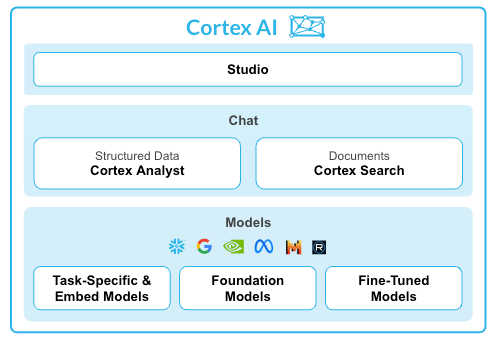
These shared definitions (or semantic models) live within Snowflake and give AI the context it needs to return accurate, relevant, and governed results.
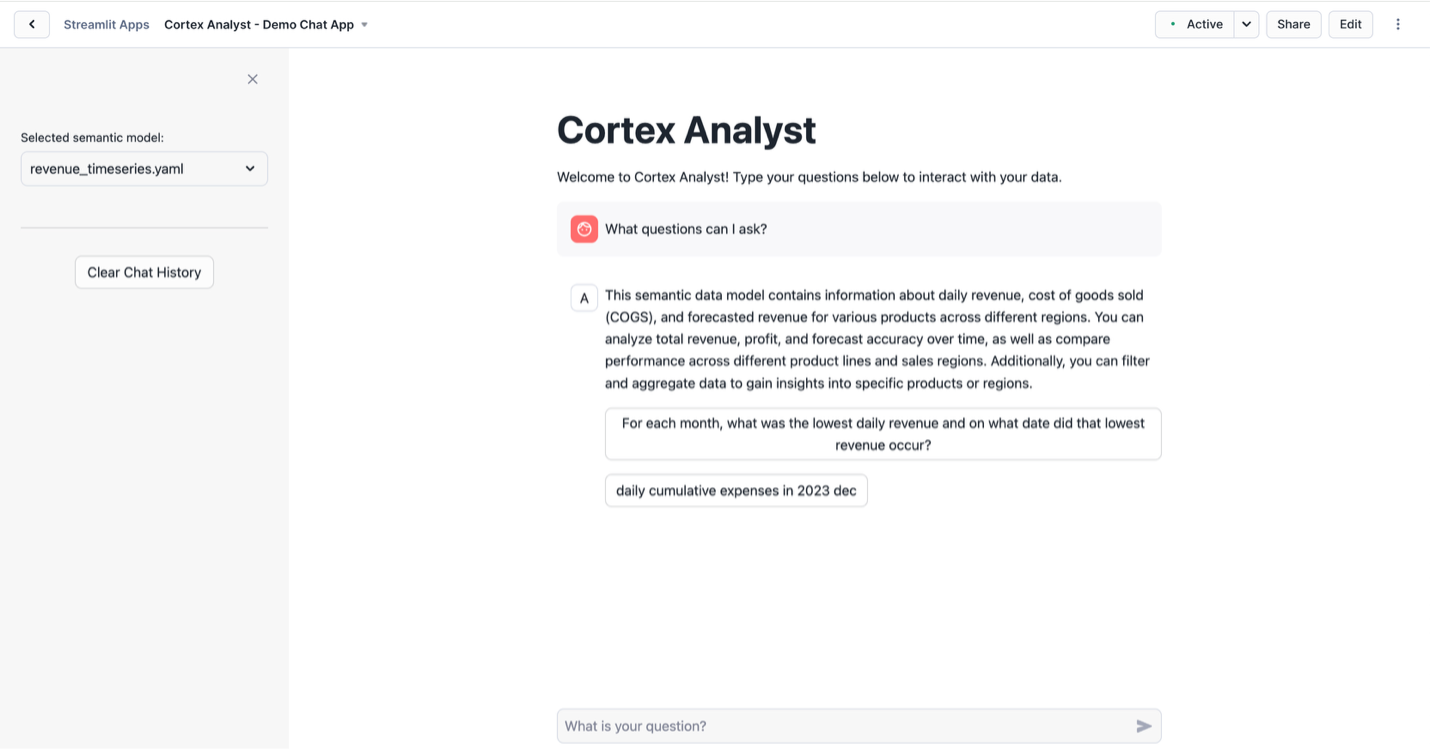
Why marketers should care:
- AI and humans will now speak the same language
- Personalization models become more accurate and portable
- Your definitions travel across tools, reducing risk and rework
3. Apps Now Run Within the Data Layer
Historically, most marketing tools needed to pull data out of a platform like Snowflake to work—whether that was to build a segment, send a campaign, or generate a report. That meant constant syncing between systems: downloading lists, managing APIs, running nightly ETL jobs. It was slow, error-prone, and always a little behind.
Now, with the Snowflake Native App Framework, apps no longer need to copy data into themselves, they can operate within Snowflake’s governed environment. So instead of asking, “how do we get our data into this tool?” you can now say, “how do we bring this tool into the data?”
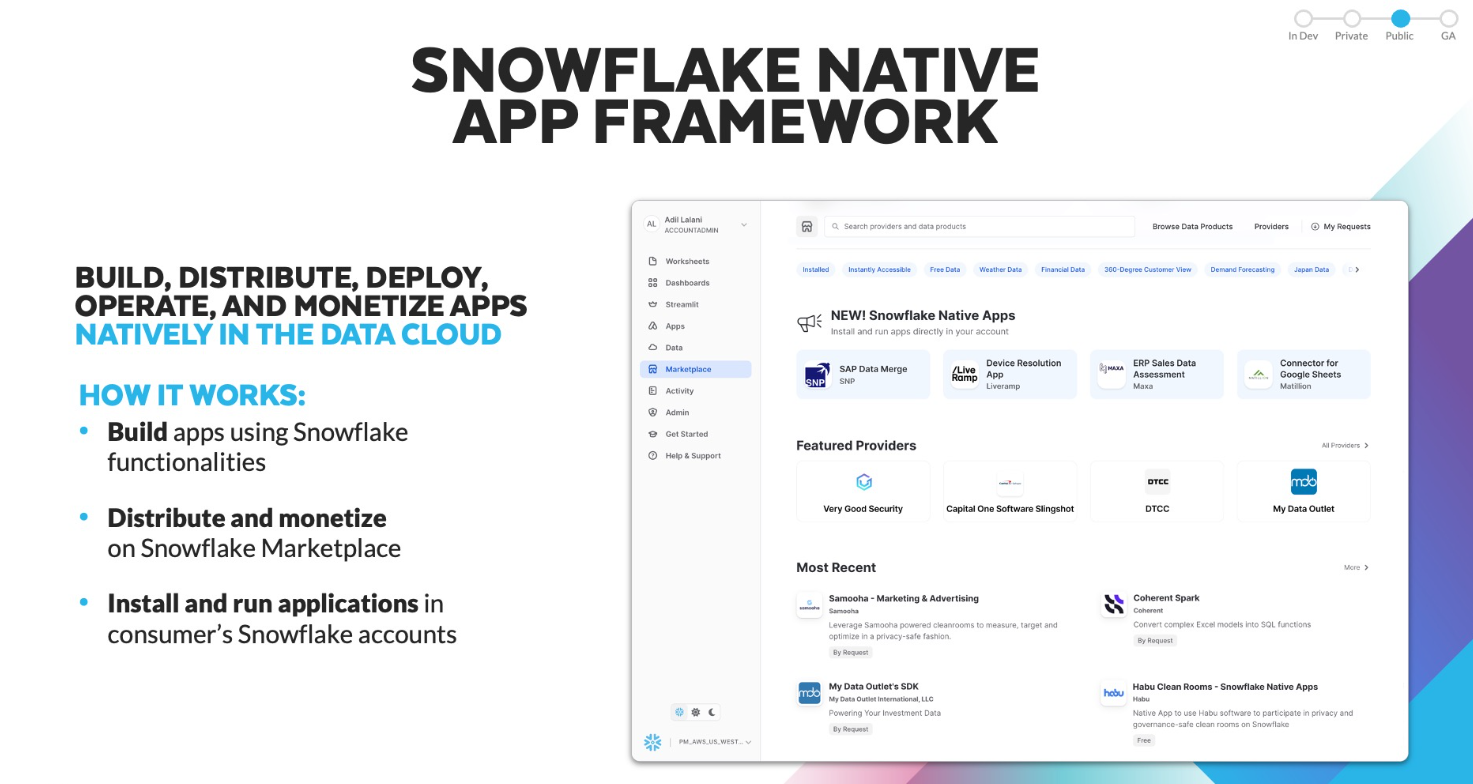
That includes things like:
- Segmentation engines
- Personalization logic
- Analytics dashboards
- AI agents
Why marketers should care:
- Less syncing means faster, more reliable data
- Better identity resolution and compliance, since everything stays in one place
- Real-time personalization and faster insights across platforms
Why This Isn’t Just an IT Conversation
It’s true that Snowflake is still more infrastructure than interface, but that gap is closing fast.
With updates like prompt-based querying, semantic modeling, and in-platform orchestration, the platform is starting to reshape how marketers access and activate data (without needing to write a line of SQL).
That’s where the line between “infrastructure” and “experience” starts to blur.
Still, many marketers are wondering: How is this different from something like Salesforce Data 360 (formerly Data Cloud)?
Here’s the difference:
- CDPs like Salesforce Data 360 are built for marketers. They offer intuitive interfaces and tools for segmentation, activation, and orchestration.
- Snowflake is built for data teams but increasingly powers the tools marketers rely on. It serves as the clean, governed foundation that many packaged CDPs run on behind the scenes—including Salesforce.
These platforms aren’t in competition. They’re part of the same ecosystem. And understanding how they work together is quickly becoming table stakes for marketing leaders.
As Snowflake’s capabilities expand, the line between data strategy and marketing strategy will continue to get thinner, and the marketers who understand both will be the ones driving performance.
If You’re Planning for 2026, Start Here
You don’t need to rearchitect your entire stack tomorrow. But if Snowflake is part of your ecosystem (or being evaluated) here’s where to focus:
- Understand your dependencies: What data feeds your campaigns? Is Snowflake in the mix? If not, should it be?
- Rethink your segmentation process: If you’re still using spreadsheets, you’re likely missing real-time opportunities.
- Partner with your data team: Snowflake isn’t “their thing”—it’s powering your triggers, personalization, and orchestration. Treat it like a core part of your CX strategy.
Bottom Line
There is no AI strategy without a data strategy. And increasingly, platforms like Snowflake are where that strategy takes shape.
The shifts we’re seeing, from embedded AI to composable architecture, aren’t just a shiny new round of feature updates. They’re the foundation for how modern customer experiences will be built and scaled in 2026 and beyond.
At Bold Orange, we help brands make sense of platforms like Snowflake and turn them into future-ready strategies that unlock enterprise data, power AI-driven marketing, and fuel performance-led growth.
If your stack is underleveraged—or if you’re ready to reimagine what’s possible—we’re ready when you are. Let’s Talk.
